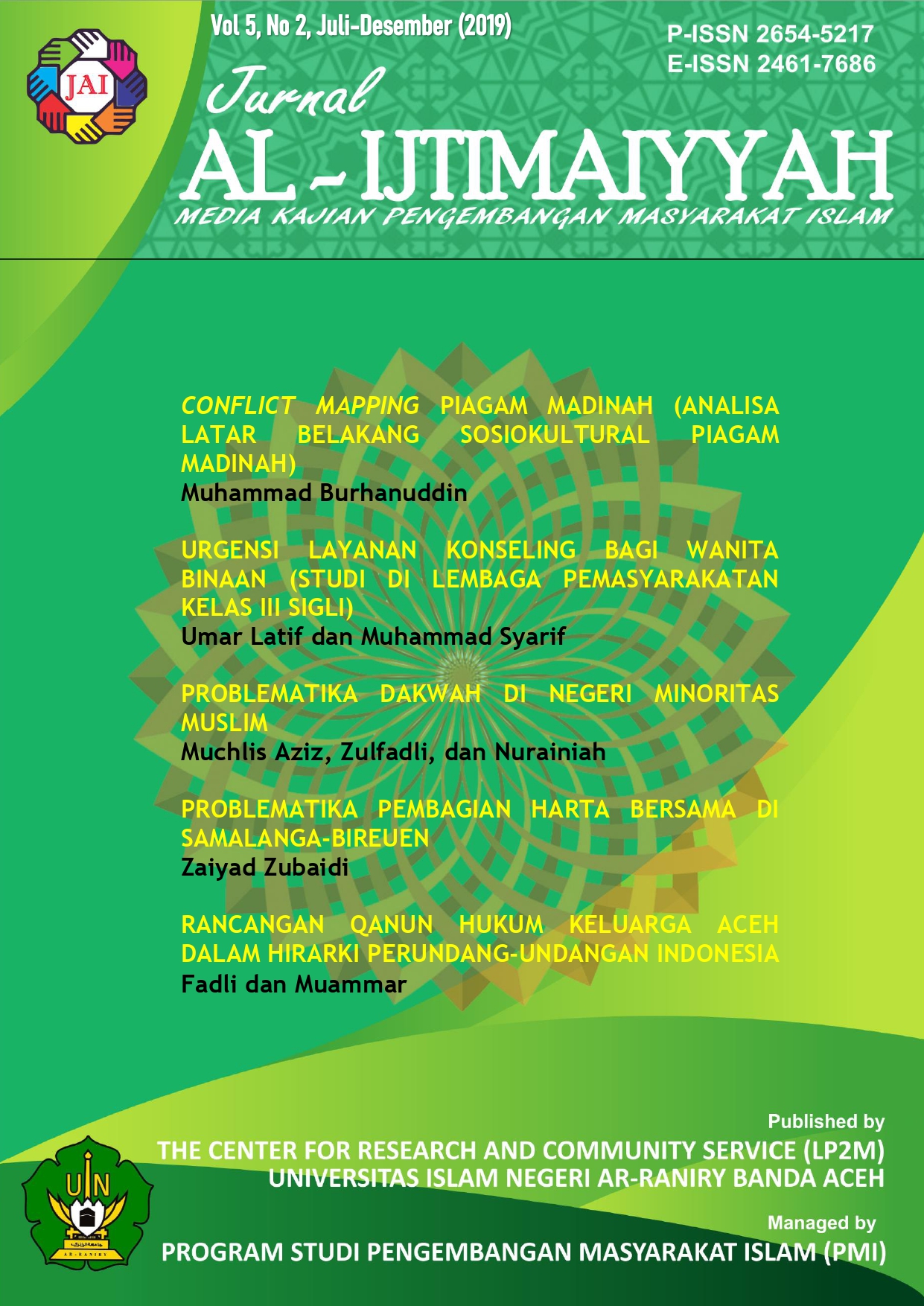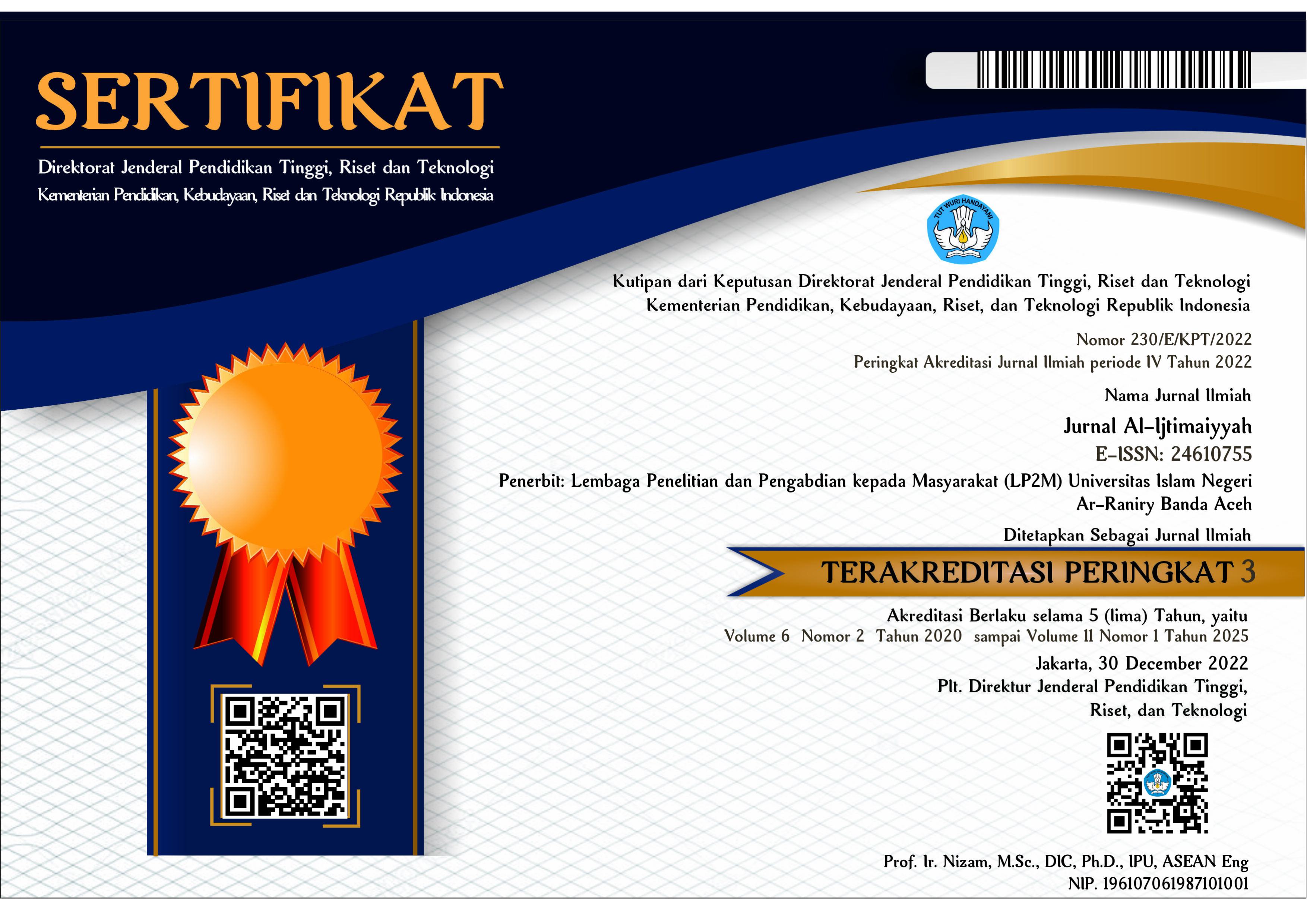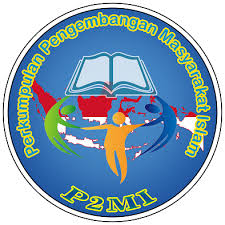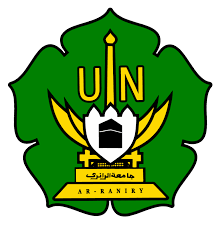CONFLICT MAPPING PIAGAM MADINAH (ANALISA LATAR BELAKANG SOSIOKULTURAL PIAGAM MADINAH)
DOI:
https://doi.org/10.22373/al-ijtimaiyyah.v5i2.5233Abstract
The Charter of Medina was able to unite of tribes in the Medina (Yastrib) to lived peacefully, pillars, and protect to each others. Peace is not be separated from the presence of conflicts before there. The reseacrher a formulation to tree problems. 1. Why the Charter of Medina was able use to unite the tribers or etnich are fused in to one friday? 2. How is the concept of conflict mapping the Charter of Medina? 3.What is the main issue and supporting issue the formation of Chater of Medina?. This reseacrh use library reseacrh. The Method of this reseach is critical analysis description. The research results get that are; first the Charter of Medina is a peace charter to unit the tribes that still ethnicity and often be in conflict as sosio-culture condition that has been in force in the community. Second the conflict mapping Charter of Medina could be the existence of the condition a position of Muhammad and his folowers in Mecca. So the presence of closely related conflict mapping intern between tribes, tribes of Medina who positioned Muhammad as universal. Second the main issues in the Medina Charter; safety, power, and resource. The suppoting issues are; unity of the people, rule of law, islamic union, public protection, protection of minorities, and highest power in the law of Medina as stated in the articles of the Charter of Medina.
Keywords: conflict, the Charter of Medina, conflict mapping, issues, and sociocultural.
Downloads
References
Abazah, Nizar. Sejarah Madinah; Kisah Jejak Lahir Peradaban Islam, terjh. K.H. Asy’ari Khatib. Jakarta: Zaman, 2014.
Ahmad Musyafiq. Pengantar Sirah Nabawiyah. Semarang: Karya Abadi Jaya, 2015.
Ahmad, Anas, dkk. “Dakwah Nabi Muhammad terhadap Masyarakat Madinah Perspektif Komunikasi Antarbudaya” Jurnal Academic, Vol.11, No, 1 (2017): 9-60.
Ash-Shallabi, Ali Muhammad. Sejarah Lengkap Rasulullah; Fikih dan Studi Analisa Komprehensif, terjh. Faesal Saleh, dkk. Jakarta: Pustaka Al-Kautsar, 2012.
Badr, Abdul Basit Abdul Razzaq. Al-Madinah History & Monuments. Riyadh: Al-Homaidhi Printing Press, nd.
Bulac, Ali, “The Mediana Document”, Charles Kurzman (ed) Liberal Islam a Sourcebook. New York: Oxford University Press, 1998.
Engineer, Asghar Ali. Devolusi Negara Islam. terjh. Imam Mutaqin. Yogyakarta: Pustaka Pelajar, 2000.
Fanani, Ahwan, “Fikih Hubungan Antarumat beragama dalam Pemikiran Sayyid ‘Uthman bin ‘Abdullah bin ‘Aqil bin Yahya Al-‘Alawi”. Surabaya: IAIN Sunan Ampel, 2011.
Fisher, Simon et al., Working with Conflict; Skills & Strategis for Action. London: Zend Books, 2000.
Gibb, H. A. R. Islam A Historical Survey. London: Oxford University Press, 1978.
Hendry Ar, Eka. Sosiologi Konflik: Telaah Teoritis Seputar Konflik dan Perdamaian, STAIN Pontianak Press, 2009.
Hisyam, Ibnu. Al-Sirah al-Nabawiyah Ibnu Hisyam. Juz 2, ed. Umar Abdu al-Sallah Tadmuri. Lebanon: Dar al-kitab al-Arabi Beirut, 1410 H/1990 M.
Ismail, Faisal. Dinamika Kerukunan Antarumat Beragama. Bandung: Rosdakarya, 2014.
Jamil, M. Mukhsin dkk. Mengelola Konflik Membangun Damai; Teori, Startegi dan Implementasi Resolusi Konflik. Semarang: WMC (Walisongo Mediation Center). 2007.
Karim, Khalil Abdul. Hegemony Quraisy; Agama, Budaya, kekuasan, terjh. M. Faisol Fatawi. Yogyakarta: LkiS, 2002.
M.A. Salahi. Muhammad Sebagai Manusia dan Nabi, tejh. M.Sadat Ismail. Yogyakarta: Mitra Pustaka, 2010.
Maimunah. “Manajemen Konflik dan Kepemimpinan Nabi Muhamad di Madainah (Studi Analisis Terhadap Nilai-Nilai Pendidikan islam dalam Piagam Madainah). Universitas Sultan Syarif Kasim Riau, 2010.
Mubarakpuri, Shaikh Saifur Rahman. History of Al-Madinah Al-Munawarh. Transld. Nasiruddin al-Khattab. Riyad: Maktaba Dar-us-Salam, 2004.
Muhammad Bin Ismail Al-Bukhori, Shohih Bukhori, Raid Ibn Sobri Ibn Alafah (ed) (Riyad: Darul Al-Hadarah, 1436 H/2015), 295. PDF E-Book
Nurjamilah, Cucu, “Pemberdayan Masyarakat Berbasis Masjid dalam Perspektif Dakwah Nabi SAW” Journal JISH (Journal of Islamic Studies and Humanities), Vol.1, No. 1 (2016): 100.
Pohan, Rahmad Asril. Toleransi Inklusif; Menapak Jejak Sejarah Kebebasan Beraama dalam Piagam Madinah. Yogyakarta: Kaukaba Dipantara, 2014.
Pulungan, J. Suyuthi. Prinsip-Prinsip Pemerintahan dalam Piagam Madinah; Ditinjau dari Pandagan Al-Qur’an. Yogyakarta: Ombak, 2014.
Shomad, Bukhori Abdul. “Piagam Madinah dan Resolusi Konflik”, Jurnal Al-Adyan, Vol.1, No. 1 (2013): 60.
Situmorang, Jubair. Politik Ketatanegaraan dalam Islam; Siyasah Dusturiyah. Bandung: Pustaka Setia, 2012.
Tohir, Ajid. Sirah Nabawiyah; Nabi Muhammad Saw dalam kajian Ilmu Sosial-Humaniora. Bandung: Marja, 2014.
Umari, Akram Dhiyauddin. Masyarakat Madani: Tinjauan Historis Kehidupan Nabi, terjh. Mun’im A. Sirry. Jakarta: Gema Insani Press, 1999.
Wahyunigsih, Fitri. “Piagam Madinah: Resolusi Konflik Perdamaian di Indonesia”, Jurnal Lorong, Vol. 4, No, 1 (2015): 39.
Watt, W. Montgomery. Islamic Political Thought. Endiburgh University Press; Edinburgh, 1980.
Wirawan. Teori-Teori Sosial dalam Tiga Paradigma (Fakta Sosial, Definisi Sosial, dan Perilaku Sosial). Jakarta: Gramedia, 1986.
Yatim, Badri. Sejarah Peradaban Islam; Dirasah Islamiyah II. Depok: RajaGrafindo Persada, 2017.
Downloads
Published
Issue
Section
License
Copyright (c) 2019 Muhammad Burhanuddin

This work is licensed under a Creative Commons Attribution-ShareAlike 4.0 International License.
Authors who publish in Jurnal Al-Ijtimaiyyah agree to the following terms:
- Authors retain copyright and grant the journal right of first publication with the work simultaneously licensed Attribution-ShareAlike 4.0 International (CC BY-SA 4.0) that allows others to share the work with an acknowledgment of the work's authorship and initial publication in this journal.
- Authors are able to enter into separate, additional contractual arrangements for the non-exclusive distribution of the journal's published version of the work (e.g., post it to an institutional repository or publish it in a book), with an acknowledgment of its initial publication in this journal.
- Authors are permitted and encouraged to post their work online (e.g., in institutional repositories or on their website) prior to and during the submission process, as it can lead to productive exchanges, as well as earlier and greater citation of published work. (See The Effect of Open Acces)










